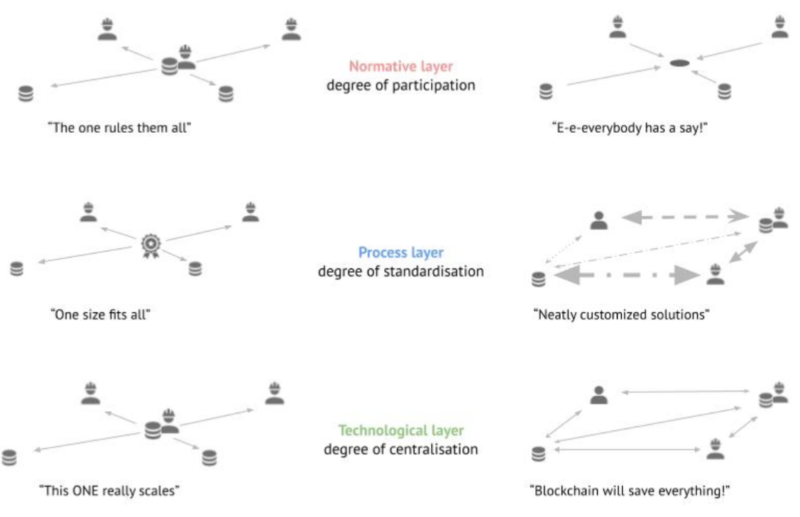
Data Governance 2: Reconciling conflicting interests in data – a research framework
Sharing and reusing digital data can enhance innovation and increase economic and social prosperity. However, economic and legal barriers as well as uncertainties often seem to prevent organizations from sharing the data they control. The Data Governance project series therefore aims to explore data governance models that help stakeholders share and reuse their data.
Research approach
Building on the first data governance project (“Finding common ground for interdisciplinary research”), the second data governance project aims to develop an analytical research framework that can be used to describe data governance structures in different contexts in a uniform manner and compare their success factors. The research framework is based on an extended literature research, especially in the fields of business informatics and information sciences, as well as an extensive exchange with researchers from the respective disciplines and experts from individual practical contexts (especially from the financial and mobility sectors).

Fig. 1: Data Governance Framework: possible roles
Research findings
With the help of the framework, not only can the coordinative effort for resolving conflicts of interest in data be described in detail, but also several dilemmas can be described and explained. One dilemma results from the respective degree of centralization or standardization of the respective data governance structures, which on the one hand leads to high scaling effects and on the other hand to a loss of influence of the respective stakeholders. The second dilemma can be described especially in the sharing of data. According to this, data sharing often fails due to a value–risk dilemma. Conforming to this dilemma, the data owner expects a concrete loss of control in data sharing and thus usually a concrete risk, while the data user cannot yet make a concrete value promise to the data owner. A concrete utility value of the data emerges only in the course of the data user’s innovation process in which he can involve the data holder. We know from the behavioral sciences that we rarely trade a concrete risk for an abstract value proposition – so does a data holder. Data governance structures must reflect these dynamics regarding value creation and risk control by resolving the described dilemma in the best possible way.

Fig. 2: Data governance levels: decentralized vs. centralized structures
Duration: 2020-2022
Funding: HIIG
 Maximilian von Grafenstein, Prof. Dr.Associated Researcher, Co-Head of Research Programme
Maximilian von Grafenstein, Prof. Dr.Associated Researcher, Co-Head of Research Programme
-
 Alina WernickFormer Associated Researcher: Data, actors, infrastructures
Alina WernickFormer Associated Researcher: Data, actors, infrastructures
Other publications
Rupp, V., Heumüller, J., & von Grafenstein, M. (2022). Effiziente Datenminimierung im Gebäude- und Quartierssektor, Rupp, V., Heumüller, J., & von Grafenstein, M. (2022). Effiziente Datenminimierung im Gebäude- und Quartierssektor. Retrieved from https://zenodo.org/record/6854465#.YuJPHi-22Rt. Publication details
Grafenstein, M. v. (2022). Wie lassen sich Datenteilen und Datenschutz vereinbaren? FAZ. Publication details
Lectures and presentations
Data Governance – Utilizar los datos con éxito, minimizar los riesgos y equilibrar los interesesDeutsche Welle Akademie Ecuador. Humboldt Institut für Internet und Gesellschaft, Berlin, Germany: 10.11.2022
Jörg Pohle
Data Laws & Data GovernanceData Commons & the Law. Humboldt Institut für Internet und Gesellschaft, Berlin, online: 27.10.2022
Max von Grafenstein
Organisation of events
Beteiligungs-Workshop zum Pilotprojekt „Data Governance & datengetriebene Verwaltung“18.02.2022. Humboldt Institut für Internet und Gesellschaft, Berlin, Germany (National)
